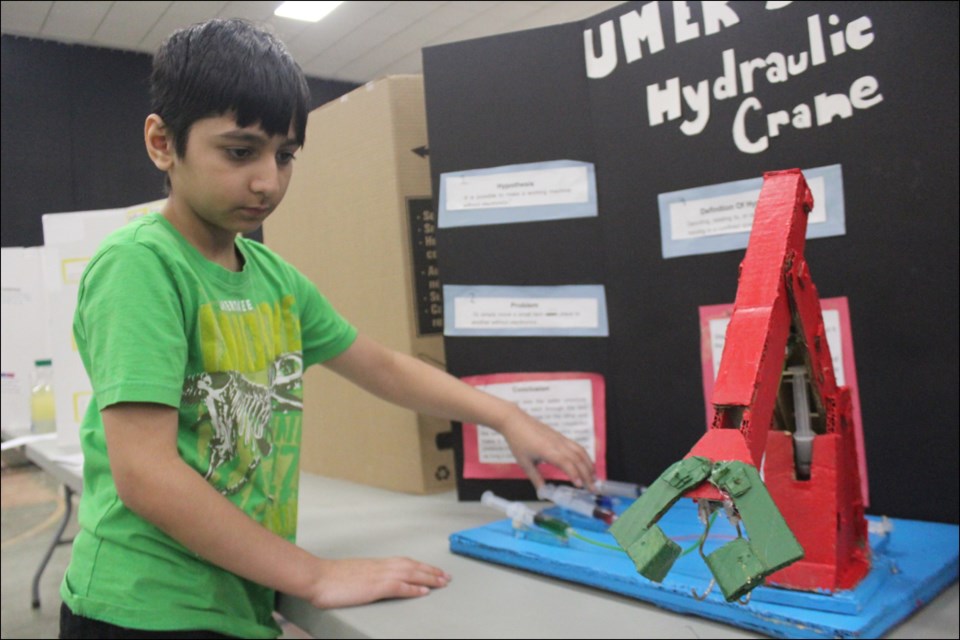The work of young scientists was on display at the Flin Flon City-wide Science Fair. Although the number of entries declined this year, the quality of projects stayed at a characteristic high.
Addie Neill seems to have found a recipe for success. Neill, a junior high student, received the Best in Fair award for École McIsaac School students, while Dax Lawrence earned a similar honour for Ruth Betts Community School entries. Neill’s project showed the difference between growing vegetables using hydroponics versus conventional soil.
“The hydroponic plant grew way healthier and way stronger. It’s a really effective way of growing a plant,” she said, showing several clipboards full of charts and statistics detailing the plants’ growth.
“In Flin Flon, you only get like two months of growing flowers and vegetables in the summer. You can buy one of these and you can do it on your own.”
Neill was a rarity in this year’s fair – a junior high entry. This year’s fair saw a major reduction in the number of entries after a change in school policy. Creating a project was no longer considered mandatory for junior high students. As a result, the number of entries was cut almost by half, from just shy of 100 last year to just more than 50 this year. Only a handful of entries came from students in some grades.
“We had a lot of kids taking initiative and doing projects on their own. It wasn’t a requirement in their classes. In terms of involvement from the kids, it’s good to see that they’re interested in wanting to do this,” said organizer and Hapnot Collegiate teacher Kari LaBorde.
Some of the projects are based on practical, personal knowledge. Grade 5 student Drayden Lowe’s project, given the creative name “Holy Nut Butter,” developed from his own severe nut allergy.
“It’s happened to me three times. I’ve gone into anaphylaxis. I read a few web pages about this, saw a few videos. I didn’t learn too much because I already knew it, but if I didn’t have the allergy, I would learn a ton,” he said.
Using glitter, glue and a series of plastic knives, Lowe showed how easily bits and pieces of food items – including nut butters – can stick on knives and cross-contaminate other food.
“It’s almost like they have legs. They crawl onto the knife, they don’t get off that knife, and if you use that knife on another sandwich, they crawl onto that one,” he said.
“We have a lot of Grades 1 to 3 students who have come up with some really creative ideas.”
Another Grade 5 student, Umer Lone, built a cardboard crane that uses a homemade hydraulic system to move vertically and horizontally, as well as lift small objects.
“I always wanted to build a working machine, but I didn’t have the resources for electronics and wires,” he said.
“You can spend your own time making projects that you want to, then present them to people. You might inspire someone else or they might enjoy it and do it themselves.”
LaBorde said this year’s fair collecting a huge range of projects, some of which will represent the city well at the regional fair in The Pas.
“It’s great to see their enthusiasm and interest in science and we hope that continues and follows up,” said LaBorde.
“For me, that’s the best part of it – to see students excited, interested, engaged, building, even just to see students follow up their projects and the quality they come up with. That’s why we do it. We want them to love science. We want to them to engage in science. We want them to be interested.”




